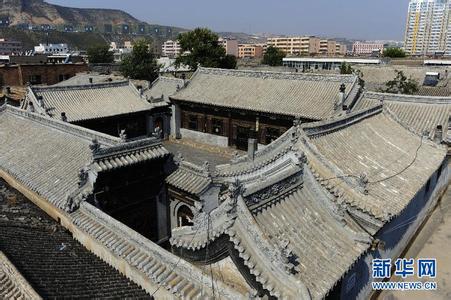Traditional dwellings designed with care
 0 Comment(s)
0 Comment(s) Print
Print E-mail Shanghai Daily, August 19, 2014
E-mail Shanghai Daily, August 19, 2014
|
|
|
[File photo of Siheyuan] |
Siheyuan, or the courtyard house, is a typical dwelling for the ethnic Han people in China that dates back more than 3,000 years. It reflects many of the basic concepts of ancient Chinese architecture.
Also known as quadrangles, courtyard houses are usually enclosed rectangular plots with buildings lining the four sides. For a simple courtyard house, there is only one courtyard, but for an upscale one, there could be two to five layers of courtyards used by a large and extended family.
According to archaeological discoveries, the courtyard house didn't have houses on all four sides in its early days. It was not until the Qing Dynasty (1644-1911) that the courtyard house had evolved into the pattern we commonly see today all across the country.
In a courtyard house, the main house sits on the north side and faces south. There are side houses lined along the east and west sides. The house on the southern side is called daozuofang, or the opposite house as it sits opposite the main house. There are also backside buildings behind the main house.
The courtyard house is built according to the Chinese concept of five elements — water, wood, metal, fire and earth, that compose the universe, as well as the eight diagrams of divination. Thus the street door is always open at the southeast corner to receive the "wind of harmony."
The main house is situated on the north side because that's considered the best position to have water, which could help in case of fire.
In front of the street gate, there is usually a pair of stone lions to guard the courtyard house or a pair of drum-shaped bearing stones to support the gate frame and show the social status of the family. Some even boast elaborate doorways, complete with tile roofs, colorfully painted wooden bracket sets and bright red door panels with shiny brass door knockers.
Behind the gate, there's a screen wall to block the view of the inside buildings and activities. Inside, the different layers of courtyards are connected through the so-called floral-pendant doors or the moon-shaped doors.
The floral-pendant door is so called because the two outer pillars of the door roof have shrunk into two pendants hanging from the eave and are richly painted with flower petals.
According to the Confucian teachings of filial piety, the main house is always designated for the oldest member or the head of the family, as it receives the most sunshine.
The side houses, which receive less sunshine, are usually assigned to the sons. And the opposite house, which receives the least sunshine, is commonly used by servants. At the west corner of the opposite house is the toilet.
The daughters always live in a building behind the main house, as that's the most secluded place in the courtyard. This is because girls and unmarried young women were not allowed to be exposed to the outside world according to Confucian tradition.
The houses in the courtyard are linked by verandas, which can also provide shelter from sun and rain.
The courtyard, if large enough, is graced with trees, plants, rock sculptures, fish tanks and stone tables and stools. So it's the ideal place to do tai chi on a clear morning or enjoy the breeze of a summer evening.
In China's capital, the Beijing Siheyuan have long been the most common dwellings of the local people.
Many have been demolished in the past decades to give way for modern skyscrapers, shopping malls and elevated roads. But some have survived and they are now deemed the cultural symbol of the city.
抱鼓石 (bàogǔshí) Drum-Shaped Bearing Stone
Baogushi, or the drum-shaped bearing stone, is a supporting structure for the gate frame of a house. But it also serves as a decoration and symbol of social status of the house owner.
As the classic Chinese character for door "門" indicates, the gate of a house, particularly a grand house, usually consists of two door panels. Therefore, there are always two baogushi sitting on the two sides of the gate. It is so called because baogushi is a stone carving with a drum-shaped top and a richly-carved base.
The base is usually decorated with carvings of popular flowers, auspicious clouds and coiling grass leaves.
Often vertically placed, the drum heads are adorned with bas-relief of playful lions or soaring dragons.
The craftsmen may also add a stone lion on top of the vertical drum — sitting, crouching, lying or rearing.
Today, people still can see such bearing stones in front of residential houses in many places in China and particularly in the front of the gates of Beijing Siheyuan, or the iconic residential courtyards in the country's capital.








Go to Forum >>0 Comment(s)